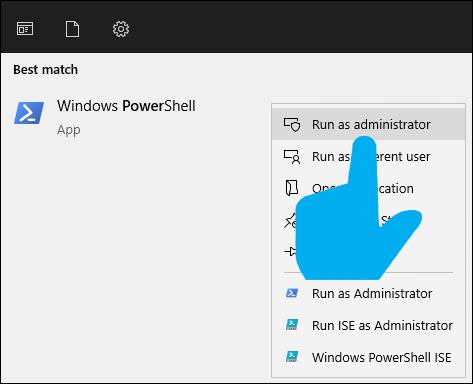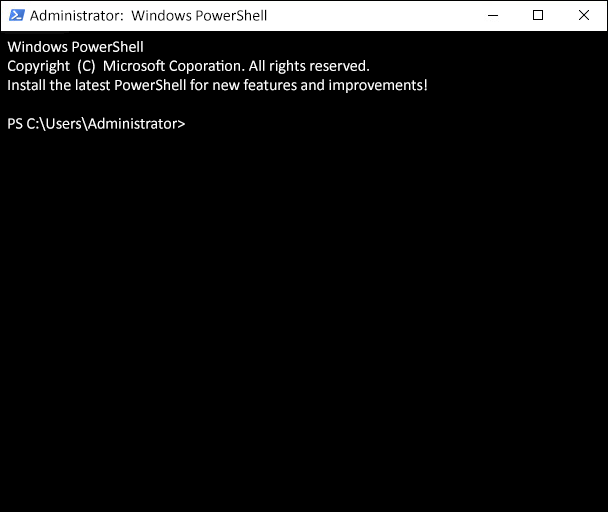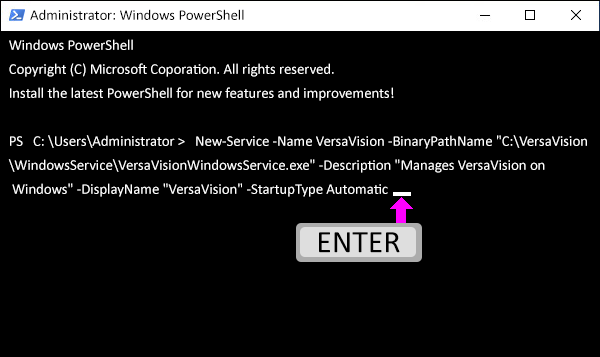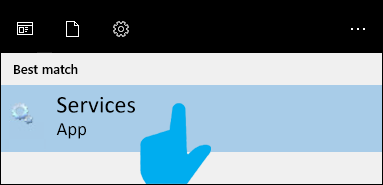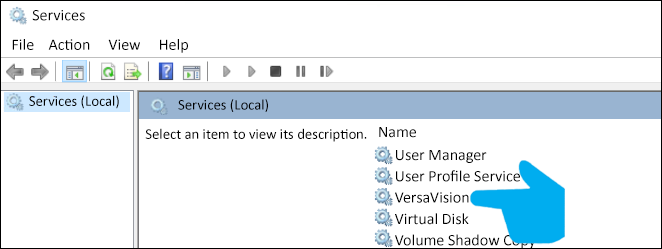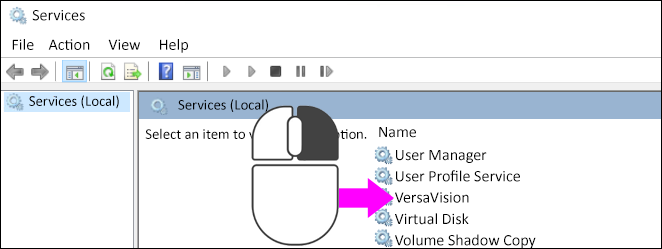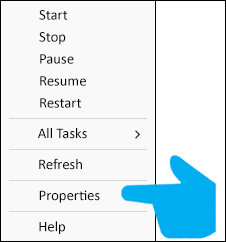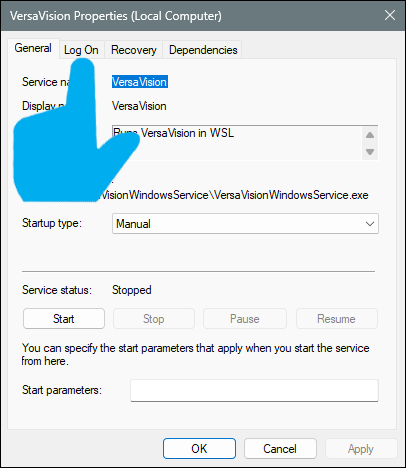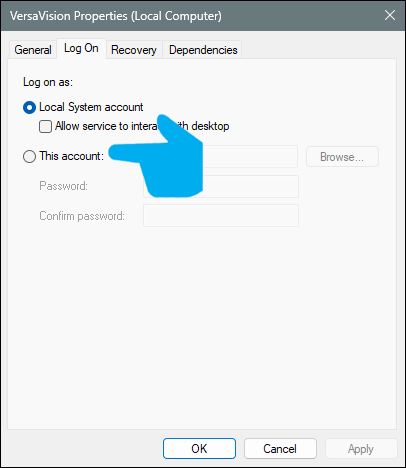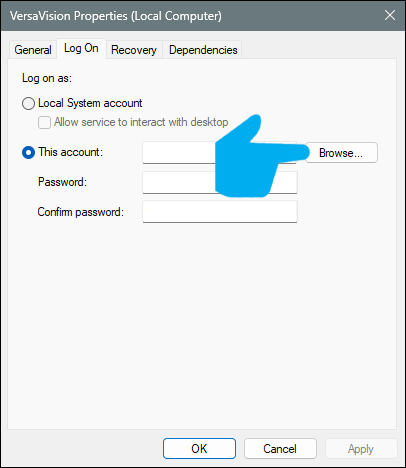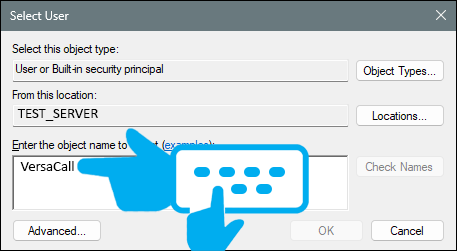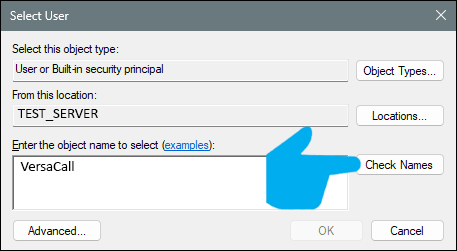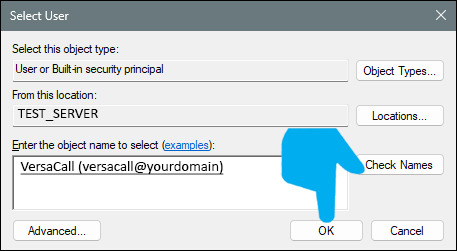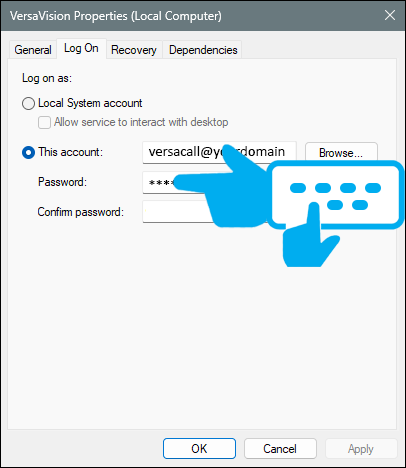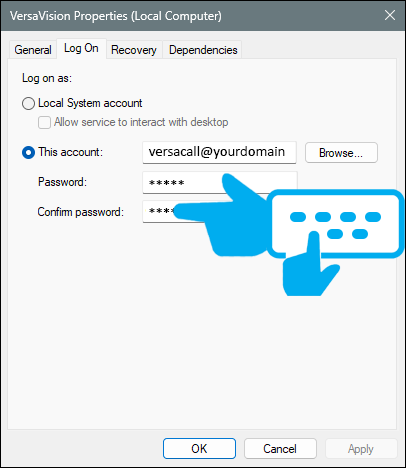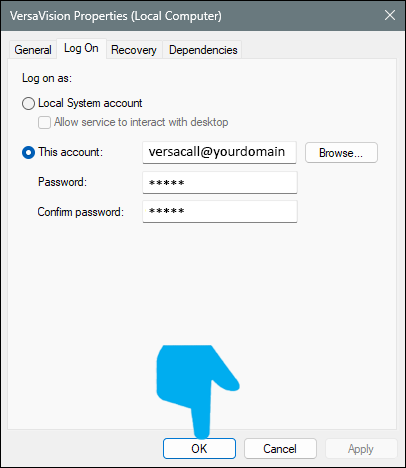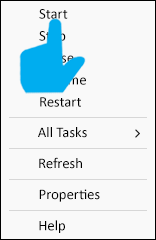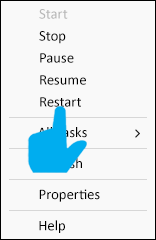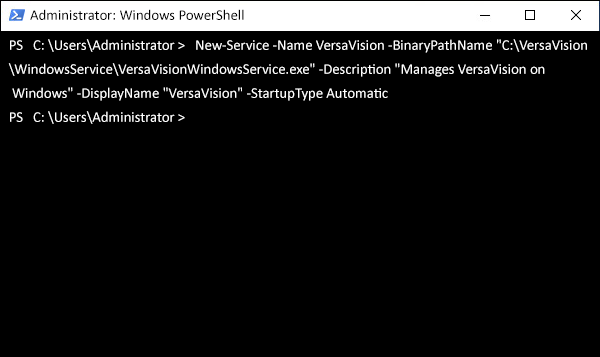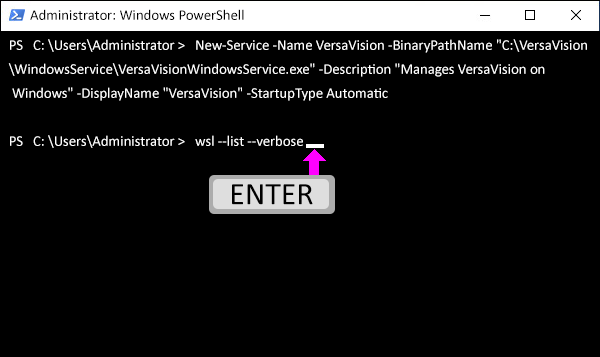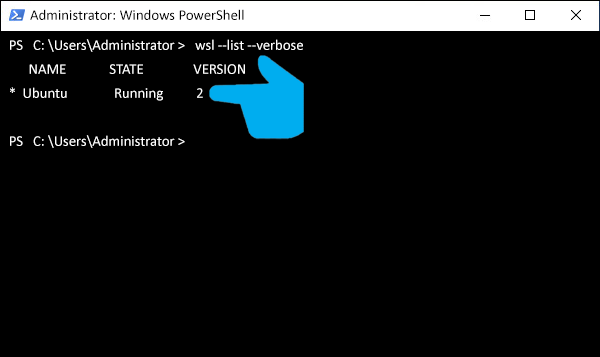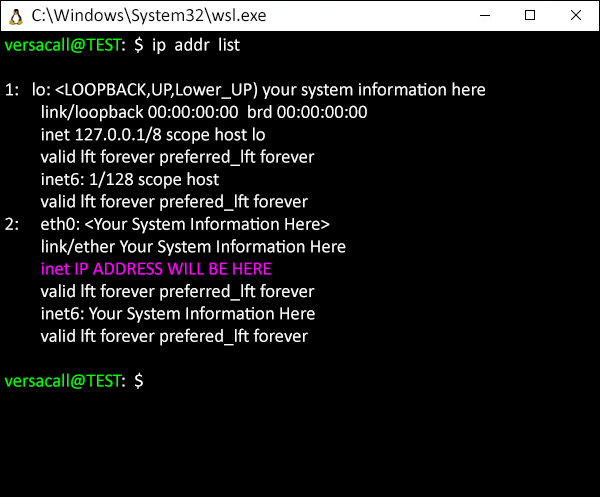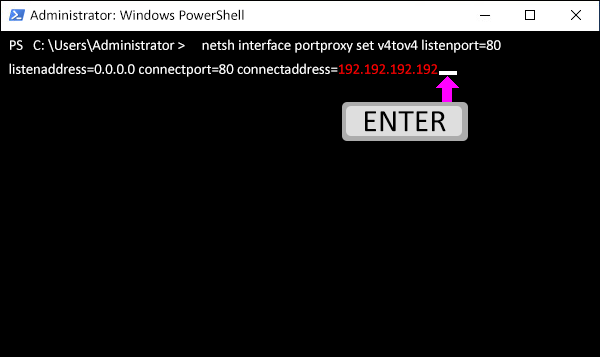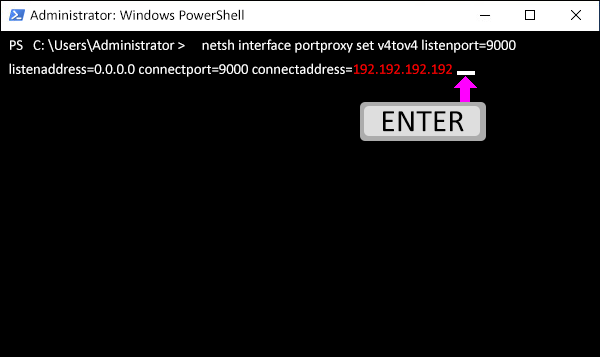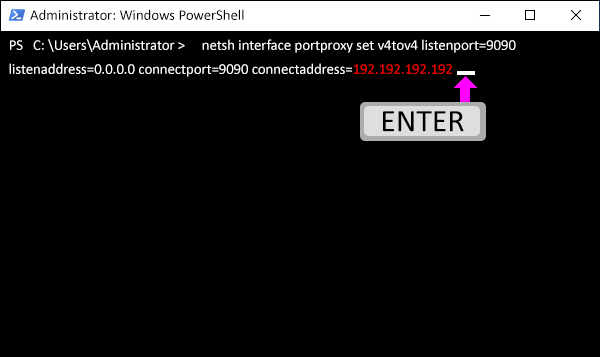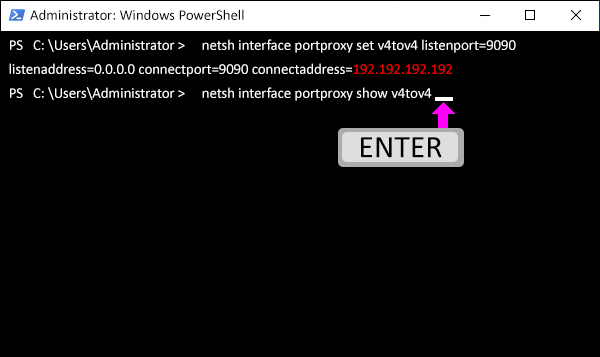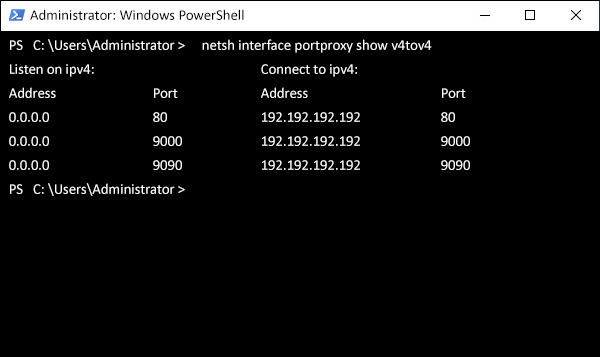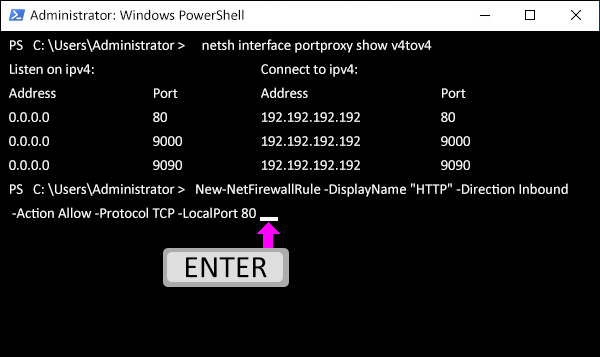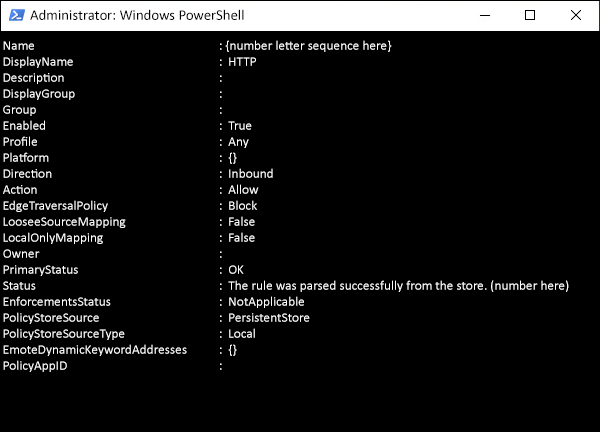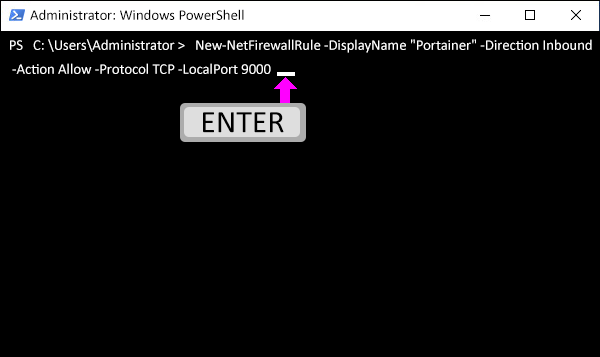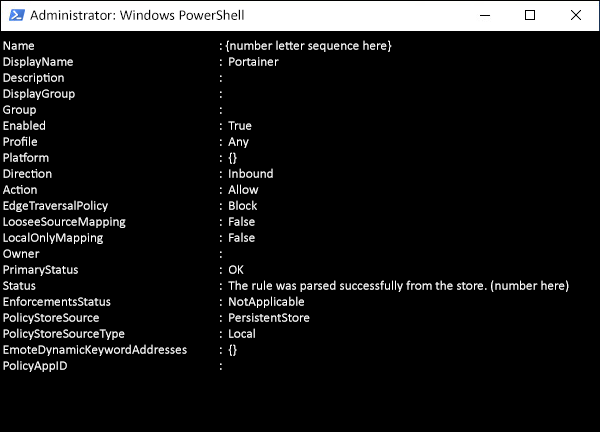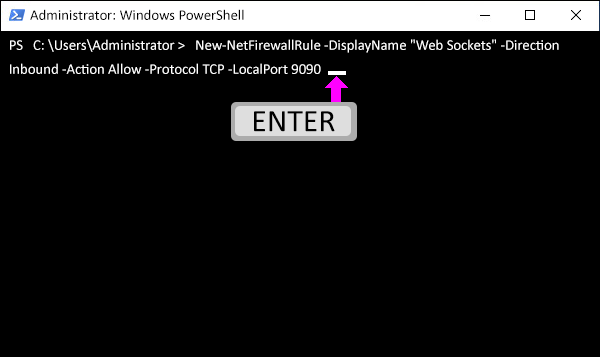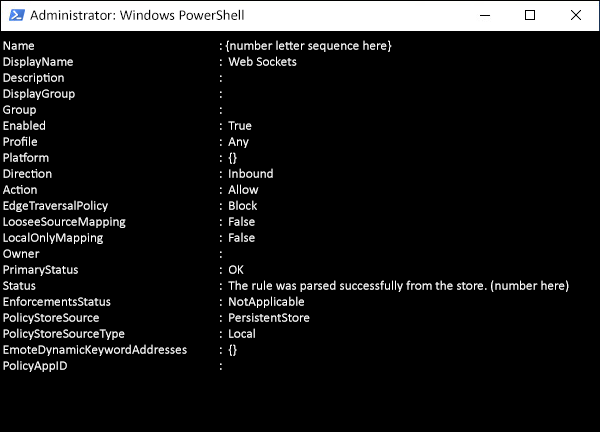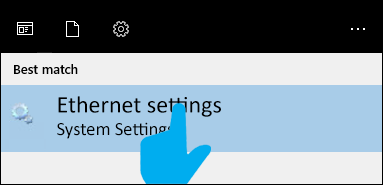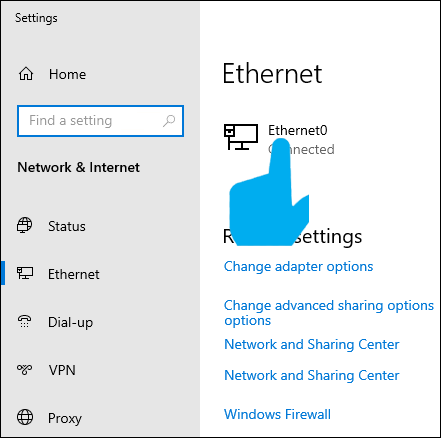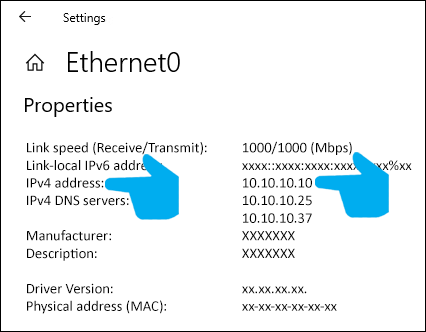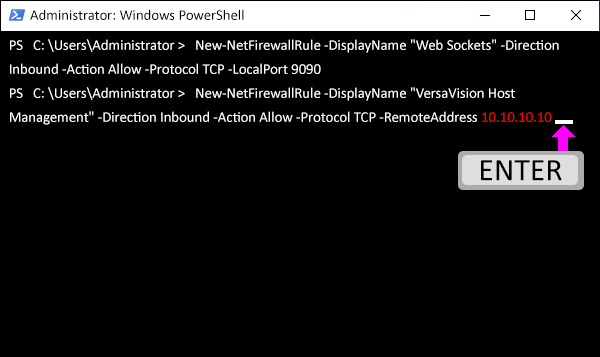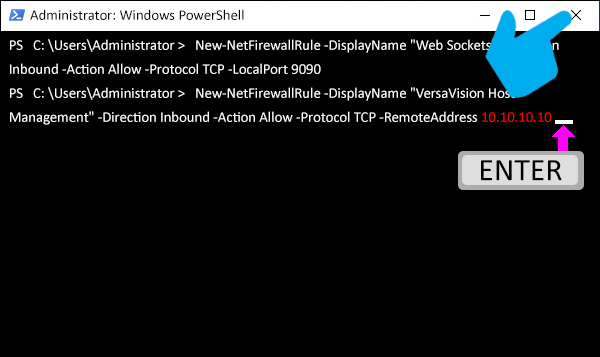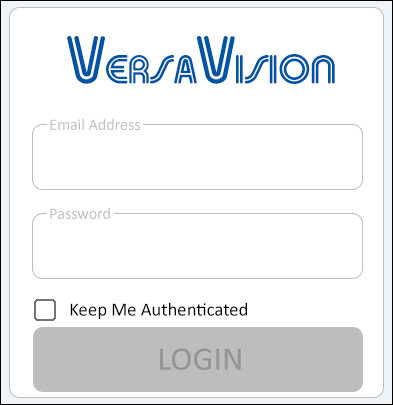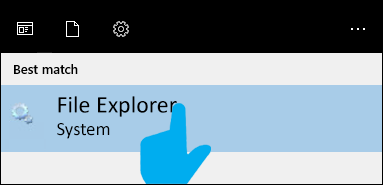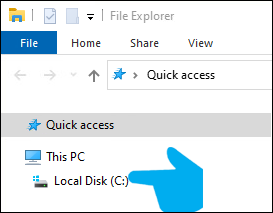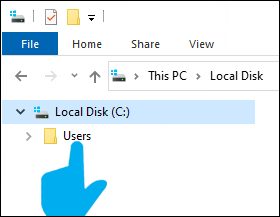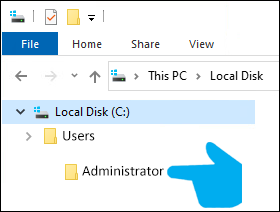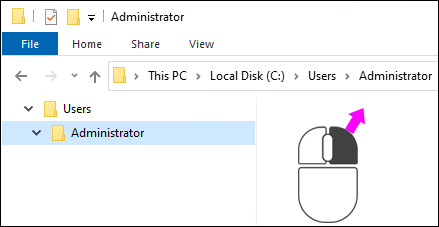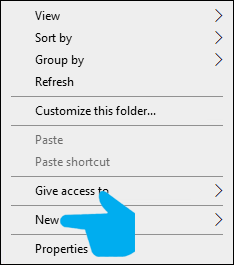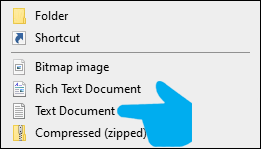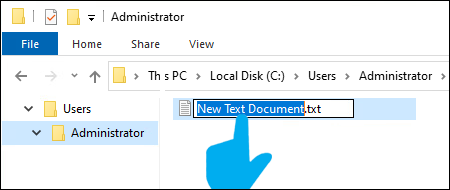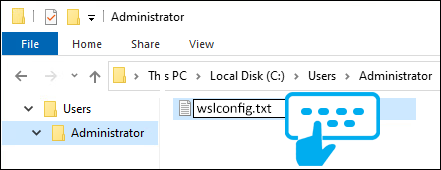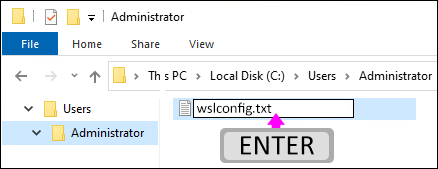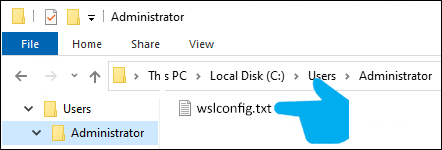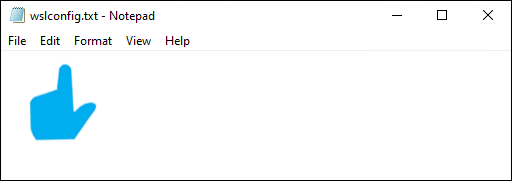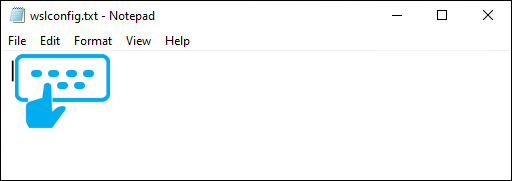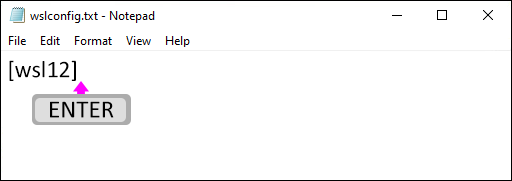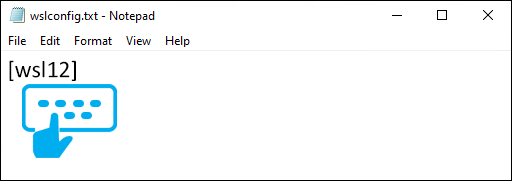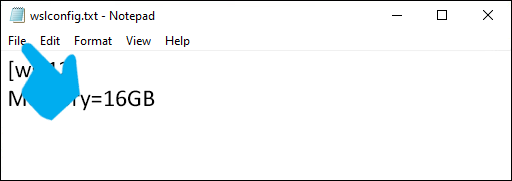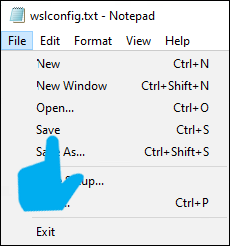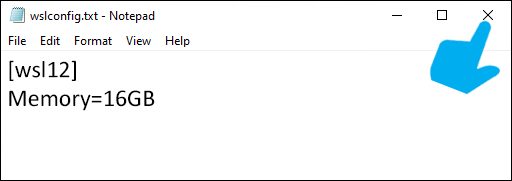Actions
Windows Install - VersaVision Service
From VersaVision Support
OVERVIEW
WSL by default requires a user to log into the Windows Computer/Server/VM in order for WSL to run/start.
The disadvantage of this is when a Computer/Server/VM is updated or restarted. WSL will stop running and VersaVision will stop running until the user manually logs in on the Computer/Server/VM.
To prevent this issue, we have a Service that runs inside Windows that keeps WSL running without a user having to log in.
This guide will explain how to install and setup this Windows Service.
REQUIREMENTS
Log In: Installer/User must have a Windows Log In with Administrator permissions. This Account must remain active after the installation.Access: When using a VM, Installer/User must have Remote PC Access to the Windows instance.Internet Access: Server must have full internet access. Access can be removed after the installation is complete.Pre-Requisites I: User must have uploaded/extracted the VersaVision Windows Service zip file to the C:\VersaVision\WindowsService folder.Pre-Requisites II: User must have installed WSL, Docker and the Core/Packages API.NOTE: The instructions below will work for Windows Server 2022, Windows Pro 10 & Windows Pro 11.
TOOL TIP
There is specific Code that needs to be entered in on the steps below. The Paste function in Power Shell and WSL works differently from Windows.
To Copy - select the Code/Text in the cell so that it is highlighted. Press the Control Key & C Key on your keyboard at the same time. Alternatively, you can right click on the highlighted text and select Copy from the pop-up menu.To Paste - Right Click on the Cursor next to the User Prompt. The copied text will fill in automatically.
INSTRUCTIONS
Open Power Shell on the Computer/Server/VM – type Power Shell in the search field next to the Windows button.
Select the Run As Administrator option for this application.
A Power Shell Window will load on the screen with a User Prompt.
Copy the Code/Text from the cell below.
New-Service -Name VersaVision -BinaryPathName "C:\VersaVision\WindowsService\VersaVisionWindowsService.exe" -Description "Manages VersaVision on Windows" -DisplayName "VersaVision" -StartupType Automatic
Paste the Code/Text into Power Shell - press the Enter key on your keyboard after the Code/Text is pasted in.
Leave the Power Shell Window open.
The Guide will come back to Power Shell later.
Open Windows Services on the Computer/Server/VM – type Services in the search field next to the Windows button.
Select the Services App from the menu.
In the Services Window, scroll down the list until you find the VersaVision service.
Right Click on the VersaVision service.
Select Properties from the pop-up menu.
On the Properties Window, select the Log On tab.
Select the This Account option.
Select the Browse button.
Type in the name of the Window User account you logged in with.
Click on the Check Names button.
The name typed in will be replaced with the qualified user name – click on the OK button.
Type in the password for this user in the Password field.
Type in the password a second time in the Confirm Password field.
Select the OK button.
When you are returned to the Services window, right click on the VersaVision service.
Select Start from the pop-up menu.
If Start is greyed out – select the Restart option from the pop-up menu.
Go back to the Power Shell Window that was left open in the beginning of the guide.
Copy the Code/Text from the cell below.
wsl --list --verbose</span>
Paste the Code/Text into the WSL Terminal.
Press the Enter key on your keyboard after the Code/Text is pasted in.
The Ubuntu service should be shown as Running.
If it is not Running, restart the VersaVision service from the previous steps.
Bring up your IP Address screen shot or notes that you made in the Server 2022/Windows 10, 11 Install – Docker Installation guide.
This IP Address, labeled as inet , will need to be used in the commands below.
IMPORTANT NOTE FOR THE FOLLOW STEPS .The next 3 Copy/Paste Code/Text steps will have an <ipaddress> field in them.
DELETE the <ipaddress> text and replace it with your IP Address found in the step above.
If this is not replaced, the Command will fail in Power Shell.
Copy the Code/Text from the cell below.
Replace the <ipaddress> text with your IP Address.
netsh interface portproxy set v4tov4 listenport=80 listenaddress=0.0.0.0 connectport=80 connectaddress=<ipaddress>
Paste the Code/Text into Power Shell.
Our example IP is in Red.
Press the Enter key on your keyboard after the Code/Text is pasted in.
Copy the Code/Text from the cell below.
Replace the <ipaddress> text with your IP Address.
netsh interface portproxy set v4tov4 listenport=9000 listenaddress=0.0.0.0 connectport=9000 connectaddress=<ipaddress>
Paste the Code/Text into Power Shell.
Our example IP is in Red.
Press the Enter key on your keyboard after the Code/Text is pasted in.
Copy the Code/Text from the cell below.
Replace the <ipaddress> text with your IP Address.
netsh interface portproxy set v4tov4 listenport=9090 listenaddress=0.0.0.0 connectport=9090 connectaddress=<ipaddress>
Paste the Code/Text into Power Shell.
Our example IP is in Red.
Press the Enter key on your keyboard after the Code/Text is pasted in.
Copy the Code/Text from the cell below.
netsh interface portproxy show v4tov4
Paste the Code/Text into Power Shell.
Press the Enter key on your keyboard after the Code/Text is pasted in.
Power Shell will display information about each of the Ports that were added in the steps above.
Each Port will show that it is now mapped to the IP Address that was entered.
Copy the Code/Text from the cell below.
New-NetFirewallRule -DisplayName "HTTP" -Direction Inbound -Action Allow -Protocol TCP -LocalPort 80
Paste the Code/Text into Power Shell.
Press the Enter key on your keyboard after the Code/Text is pasted in.
You will get a print out on the screen the looks like the image below.
Copy the Code/Text from the cell below.
New-NetFirewallRule -DisplayName "Portainer" -Direction Inbound -Action Allow -Protocol TCP -LocalPort 9000
Paste the Code/Text into Power Shell.
Press the Enter key on your keyboard after the Code/Text is pasted in.
You will get a print out on the screen the looks like the image below.
Copy the Code/Text from the cell below.
New-NetFirewallRule -DisplayName "Web Sockets" -Direction Inbound -Action Allow -Protocol TCP -LocalPort 9090
Paste the Code/Text into Power Shell.
Press the Enter key on your keyboard after the Code/Text is pasted in.
You will get a print out on the screen the looks like the image below.
Leave the Power Shell Window open.
The Guide will come back to Power Shell later.
Before executing the next command, you will need to get the IP Address of the Windows Server/Computer/VM.
If you do not know the IP Address, type Ethernet settings into the search field next to the Windows button.
Select the Ethernet settings application.
Click on the Ethernet connection that shows as Connected .
Scroll down to the Properties section, the IP Address needed is the one marked as IPv4 address .
Make a note of this IP Address.
Return to the Power Shell Window that you left open.
Copy the Code/Text from the cell below.
New-NetFirewallRule -DisplayName "VersaVision Host Management" -Direction Inbound -Action Allow -Protocol TCP -RemoteAddress <serveraddress>
Paste the Code/Text into Power Shell.
REPLACE the <serveraddress> field with the IP Address you noted in the step above in Ethernet Settings .Press the Enter key on your keyboard after the Code/Text is pasted in.
Our example IP is in Red.
Close the Power Shell Window.
Open a Web Browser on another computer, not the Computer/Server/VM where VersaVision has been installed, connected to your network.
Edge is shown in the example, Chrome will work as well.
Type in the Server IP Address , that you obtained in the previous steps, into the web browser.
For our example this is 10.10.10.10 .
Press the Enter key on your keyboard.
The VersaVision log in screen should load.
If this screen does not load, contact VersaCall for assistance.
Return to the Computer/Server/VM that has the VersaVision installation.
Type File Explorer into the search field next to the Windows button.
Select the File Explorer application from the list.
Double click on the C: Drive.
Double click on the Users folder.
Double click on the (Users Name) Folder.
Our example is showing Administrator.
Inside File Explorer, select the View option from the tool bar.
Select the File name extensions option.
There should be a check mark next to the File name extensions .
Right click on an empty space on the right side of the root menu.
Select New from the pop-up menu.
Select Text Document from the New Menu
A new text file will show on the screen named New Text Document .
The name will be highlighted, click on the file name.
Replace the New Text Document name with wslconfig .
All lowercase letters with NO spaces.
Press the Enter key on your keyboard after entering the new file name.
Double click on the wslconfig.txt file you just created.
A new Notepad Window will load on the screen.
The document will be blank, click on the document to get a cursor.
Once the cursor appears, type in [wsl12] .
All lowercase letters NO spaces.
Press the Enter key on your keyboard after typing in the text.
Type in Memory=16GB exactly as it is here.
After typing in the second line of code, select File option from the Window Tool bar.
Select Save from the File menu.
Close the Notepad Window by clicking on the X in the top right corner.
Close all open windows and reboot the server.
NOTE: The Computer/Server/VM MUST be restarted for all changes to take effect.
Return to the Software Install Main page and continue with the next Guide/Step.



